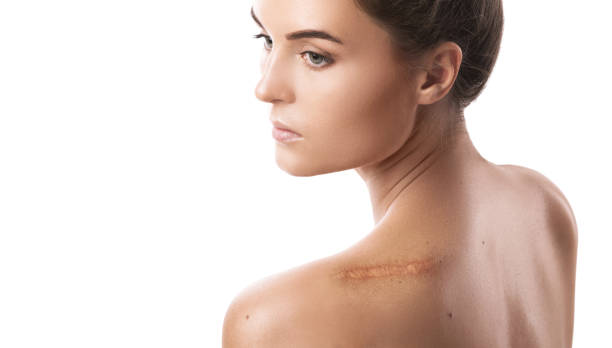Scar revision surgery allows citizens of Bengaluru to permanently reduce the appearance of wide, raised, or irregular scars.
Using the latest techniques with an artistic eye and skillful touch, Dr Raghavendra Kaladagi is able to tailor scar revision treatment to each individual’s unique skin and goals.
Climate of the area and typical skin types are important in determining the course of action for optimal healing and patient comfort.
The following detailed procedure for delivery of scar revision in Bengaluru is a model. They explain the treatment process and options so you can better understand what to expect.
What Is Scar Revision Surgery?
Scar revision surgery primarily focuses on improving the aesthetic appearance of scars. As a result, it restores the appearance and usefulness of your skin. Fortunately, there are a variety of highly effective scar treatment options.
For instance, you might excise the scar and suture the skin shut, or use lasers to flatten the region. Surgeons often have expertise in treating specific types of scars. They treat keloids, thick, raised scars typically located on the chest or shoulders, and hypertrophic scars that can sometimes heal without treatment but still need help.
For others, steroid injections in addition to surgery are necessary, which may continue to provide benefit for two years.
Exploring Scar Revision Techniques
Scar revision surgery accomplished this through various techniques to make scars less visible and more consistent with the surrounding skin.
At Phoenix Plastic Surgery Centre in Bangalore provides advanced scar revision options that suit every individual’s scar and skin type.
Laser resurfacing techniques smooth and flatten raised scars, as well as improve skin color. Surgical excision is effective for thick or wide scars, as the surgeon is able to cut and close the skin in straight lines.
Dermabrasion essentially sands the skin’s top layer to smooth and fade the appearance of rough or uneven scars. Soft tissue fillers are ideal for flat scars and dents or pitted marks. Z-plasty allows the scar to run along existing folds of skin to create a more natural look.
The latest tools—lasers, suction, stem cell treatments—provide amazing results with minimal risk.
Choosing an appropriate revision should consider the age, size, and color of scars.
|
Technique |
Best For |
How It Works |
|---|---|---|
|
Laser Resurfacing |
Raised, red scars |
Uses light to smooth skin |
|
Surgical Excision |
Wide, thick scars |
Removes and closes scar |
|
Dermabrasion |
Rough, uneven scars |
Sands off top layer |
|
Fillers |
Sunken, pitted scars |
Adds volume under scar |
|
Z-plasty |
Long, tight scars |
Shifts scar along skin line |
Getting Ready for Your Surgery
Getting ready for scar revision surgery requires careful and detailed preparation. It all begins with an in-depth consultation, in which patients discuss their health history, medications, and allergies with their surgeon. This allows to identify potential dangers and establish meaningful objectives.
In some cases, surgeons will recommend medical tests or screenings to determine whether the patient is a suitable candidate for surgery. Patients leave with a step-by-step checklist of what they need to do. This checklist often includes important instructions such as no smoking cessation, SPF 30 or greater sun protection, and no direct sun exposure onto the scar area.
Their initial appointments often include discussions of anesthesia options and long-term recovery expectations. This includes the use of topical medications that can last for months. On the day of surgery, patients are checked in by arrival time, and the staff goes through how long the procedure will be and some aftercare as well.
Navigating the Healing Process
Postoperative scar revision surgery at Phoenix Plastic Surgery Centre takes a defined course of healing. Immediately after surgery, bruising and swelling reach their maximum by the second or third day, subsiding over a six-week period. Itching or mild pain of the incision line is normal and resolves within a few weeks.
Patients should avoid getting the site wet for the first 24 hours. In addition, patients need to adhere to their surgeon’s post-op care plan, which can include scar massage and silicone gels. Staying hydrated accelerates the healing process and within a few days, the average person is back to most normal activities.
High-intensity exercise should require a period of two to three weeks for recovery. Results reveal themselves as the scars continue to develop—sometimes for up to a year. Routine examinations are crucial to ensure proper healing and identify any issues as soon as possible.
Understanding Potential Risks
While scar revision surgery has its own well established risks. Anyone in Bangalore who is thinking of getting this procedure done should be very well aware of them. The risk of the most frequent complications— infection and bleeding —and the risk that a scar may return even after surgery remains high.
For some, though, skin type, age, and their body’s healing process may alter the riskiness of surgery. Some scars, notably burn scars, can scar down and tighten the skin making basic movement painful or even impossible. These complications frequently require multiple surgeries to correct.
At Phoenix Plastic Surgery Centre, experienced surgeons minimize these risks with advanced technology and individual attention. Other folks struggle with the emotional aspect of recovery as well, and may need additional help.
What Results Can You Expect?

Scar revision surgery can be successful to relieve pain, itching and irritation due to scarring. Outcomes are different, depending on the kind of scar, how old it is, and how each person heals. Many types of scars, including hypertrophic scars, can eventually fade by themselves, but this process can take more than a year.
Keloid scars can become prominent years after the initial trauma and can become hypertrophic for months before maturing. It typically takes 12 to 18 months for most scars to mature. New scars are usually the last in line for revision.
Traditional creams and gels don’t penetrate deep enough to be effective. Pressure garments and silicone sheets will be more effective if worn diligently for several months. Ideally, you should follow up with them long-term for the best results.
At Phoenix Plastic Surgery Centre in Bangalore, the surgeons take time to give the best advice to patients. They tailor each action plan to realize the greatest potential while remaining practical.
Beyond Surgery: Other Options
Scar care goes beyond the operating room. Non-surgical routes often give strong results, either alone or with surgery. For thick scars or keloids, repeated steroid shots are the first step.
Other non-surgical picks often used at Phoenix Plastic Surgery Centre in Bangalore are laser therapy, microneedling, 5-FU injections, and nanofat injections. Laser and pulsed light work for scars after old surgeries or when someone wants to avoid more cutting.
Microneedling helps with color and texture, but needs four to eight rounds for real change. Nanofat shots use stem cells to boost healing, though these need more than one session.
Daily sun care and skin routines make scars fade better. New tech is coming up, offering more hope.
Conclusion
Scar revision surgery is an encouraging option for individuals who wish to improve the appearance and texture of mature scars. People in Bangalore encounter every type of scar—burns, ancient surgical scars, acne indentation. Each story is different. A solid game plan, open conversation with your plastic surgeon, and diligent aftercare will give you the best chance at smooth, clear skin. Some demonstrate rapid change, others require an extended period of time, or a combination of both approaches.
Patience and the right care go a long way. To find a personalized plan that suits your skin and your story, visit Phoenix Plastic Surgery Centre in Bangalore. Their staff provides honest, direct feedback and practical solutions. Stop in for a conversation, receive a detailed plan, and schedule a consult this week!
Emergency Cases
Frequently Asked Questions
What is scar revision surgery?
Who is a good candidate for scar revision surgery?
What types of scars can be treated?
How long is the recovery after scar revision surgery?
Are there risks involved with scar revision surgery?
Will my scar disappear completely after surgery?
Are there non-surgical options for scar improvement?

